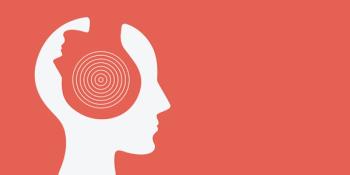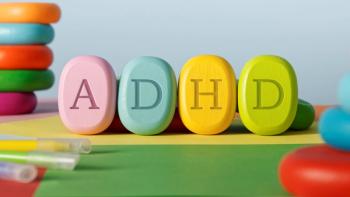
- Vol 42, Issue 7
The 6 Steps to Catalyze CBT and DBT With Young Patients
Key Takeaways
- Case conceptualization is crucial for personalizing CBT and DBT, integrating biopsychosocial elements and the biosocial theory to address emotion dysregulation.
- Adhering to CBT and DBT principles prevents therapeutic drift, balancing fidelity with flexibility to engage patients through personalized interventions.
Discover 6 essential steps for psychiatrists to enhance the effectiveness of CBT and DBT in treating young patients.
SPECIAL REPORT: PSYCHOTHERAPY
Cognitive behavior therapy (CBT) and dialectical behavior therapy (DBT) are widely adapted treatment paradigms grounded in empirical findings, meta-analyses, and case reports.1 However, often these powerful change-makers do not work as well in clinical practice as they do in manuals and randomized trials. Consequently, in this brief article, we offer 6 steps to help psychiatrists catalyze CBT and DBT with their young patients.
Step 1. Case Conceptualization
Although CBT and DBT offer a compelling suite of coping techniques, they are rooted in case conceptualization. Psychiatrists are well-advised to embed interventions within a robust case formulation. In this way, they may scaffold a personalized evidence-based approach to treating individual patients who appreciate their unique contextual circumstances.
Case conceptualization is seen as the nucleus of CBT with young patients.2,3 A CBT formulation reflects a biopsychosocial approach that integrates learning and information processing theories. Elements of the conceptualization synthesize ethnocultural vicissitudes, developmental history, family/school/social functioning, medical background, physiological/emotional/behavioral/cognitive/interpersonal symptoms, and behavioral antecedents and consequences. These multiple ingredients are then combined into a simple recipe for formulation. Rubrics for this type of conceptualization can be found in various sources.3,4
Similarly, DBT offers a complementary framework that builds on the science underpinning CBT while directly incorporating a social-emotional framework. The biosocial theory, developed by Marsha Linehan, PhD, highlights emotion dysregulation as a direct result from a transaction between a heightened biological sensitivity and an invalidating environment.5 Youth who experience dysregulation display rigid thinking patterns, impulsiveness, and heightened emotions, and can make sense of their inner chaos through validation and skills acquisition. Integrating the biosocial theory into therapy allows providers to adopt a nonjudgmental stance and craft a nuanced understanding of what created heightened emotion dysregulation. The specific conceptualization of sources of invalidation as well as antecedents and consequences of emotion dysregulation provide direction for targeted skill application. In sum, conceptualization propels a clear map for treatment.
Step 2. Adhere to Signature Principles, Processes, and Practices
Adhering to the maxims inherent to CBT and DBT is essential. Fidelity mitigates the pernicious influence of therapeutic drift. In CBT, collaborative empiricism and guided discovery are fundamental principles (
In DBT, fidelity hinges on maintaining distinctive core processes, including dialectical strategies, skills generalization, and validation. Clinicians are tasked with keeping a dialectical stance—such as when walking on a tightrope—with one foot firmly planted in acceptance (recognizing the factors that have contributed to the youth’s suffering) and the other stepping toward change (supporting them in building a meaningful life).5 This balancing act is achieved through structured tools such as chain analyses, diary cards, and skills teaching, which assist youth toward behavioral change. Providers are encouraged to utilize stylistic elements of irreverence and genuine authenticity that foster connection, disarm resistance, and model emotional flexibility.
CBT and DBT embrace a balance of fidelity and flexibility.7 Flexibility involves creativity, innovation, and deliberate modification.8 Practicing with fidelity and flexibility requires maintaining an equilibrium between tradition and innovation. This flexibility empowers clinicians to bring treatments to life in ways that align with their unique style and the youth’s idiosyncratic interests. For example, teaching deep breathing techniques using bubbles for one youth and an imaginary saxophone solo for another, or a favorite YouTube video of a hockey player in the penalty box resting to rejoin the fray reflect flexibility. Youth resonate enthusiastically when their passions are invoked in care.
Step 3. Know the Difference Between Skill Acquisition and Application: Mind the Gap!
Recognizing the difference between skill acquisition and application is a third imperative. For instance, after working with many children and adolescents with anger management difficulties, I have found that few (if any) youths fail to acquire the skills. However, being able to apply the skills when they are angry is a much more difficult task. Psychoeducation builds skills and involves instruction, modeling, and practice in typically emotionally neutral situations. Psychotherapy, on the other hand, is characterized by guiding patients to apply their acquired skills when they are distressed. CBT and DBT include skill acquisition and skill application modules. Moreover, as step 4 asserts, both models encourage practicing applying the skills in session amid negative emotional arousal.
Step 4. Apply Techniques in the Context of Negative Emotional Arousal
CBT and DBT focus on applying interventions in and between sessions when patients are distressed. This feature makes both models experiential and phenomenological. Thoughts, behaviors, feelings, and interpersonal relationships are therapeutically processed in the here and now, regardless of whether they are based in the past, implanted in the present, or anticipated in the future. As Gosch et al summarized, “A key ingredient to successful CBT is making the therapy content child-focused and the process experiential.”9 However, supervisory experiences teach us that many clinicians neglect this pivotal step.10
The importance of implementing procedures amid emotional arousal is a perennial strategy in cognitive behavioral approaches.11 Indeed, it is based on the state-dependent learning hypothesis.12 Thought diaries, relaxation training, social skills training, and cognitive restructuring interventions are best applied during negative emotional arousal. Exposure-based interventions explicitly require in-session negative emotional arousal. Emotional exposures are the pinnacle of change in DBT. Building a meaningful life involves experiencing core emotions such as shame, grief, fear, and sadness in an accurate and effective way. Young patients learn how to experience these emotions on purpose and in a safe environment rather than acting out or shutting down.13 Chain analyses allow patients to confront distressing emotions while staying grounded in self-compassion and radical acceptance of their current realities. The key to success is ensuring the generalization of skills use beyond simple knowledge and into active and timely application.
Step 5. Evaluate Treatment Progress via Measurement-Based Care
Tracking treatment progress is fundamental to CBT and DBT. Measurement-based care dovetails precisely with collaborative empiricism.14 Various metrics, including functional outcomes, symptom scales, and user-experience measures, serve this goal. Of course, functional outcomes that reflect patients’ lived experience tend to be most compelling. Scores on symptom and functional metrics not only evaluate progress but also guide the choice of interventions. The diary card is a core DBT tool that prompts patients to document daily ratings of emotions, skills use, medication adherence, and other behavioral metrics. This instrument collects consistent and timely data throughout a patient’s treatment, allowing for the identification of trends and patterns in the constellation of data. Gathering regular feedback regarding the patient’s response to interventions is the optimal mechanism to ensure treatment is accurately targeting root pathology.
Step 6. Practice What You Preach
Therapists’ self-care is central to DBT and CBT. Our supervisory experiences tell us that one of the best ways to learn CBT is self-practice. Self-practice yields several beneficent outcomes, including increased skill level and enhanced empathy.15 Completing a thought record identifying their automatic thoughts gives psychiatrists valuable added perspective on the inherent advantages of the technique. DBT emphasizes the value of self-disclosure around skills use, and patients appreciate how normalizing it is to hear that clinicians are also using the skills. Furthermore, clinicians can reap the rewards associated with the various coping skills we teach. Just as a tool is only as skilled as its wielder, treatment is directly affected by the competence, and, thus, wellness of the provider. We might as well benefit from the things that we know work.
Concluding Thoughts
CBT and DBT are effective procedures, but they are not magic.3 Competently implementing a correct intervention dose at the proper time aimed at the fitting target is hard work. The 6 steps outlined here ideally point psychiatrists in the right direction. Strong training and continued practice will help steady their course when they have to navigate difficult waters.
Dr Friedberg is a psychologist and independent training consultant in CBT. Dr Thordarson is a psychologist and manager of the Outpatient Acute Mental Health Service at the Children’s Hospital of Orange County in California. Dr Rozmid is a psychologist and founder at Clarity CBT & DBT Center and clinical assistant professor at the University of California, Los Angeles.
References
1. Thordarson MA, Sullivan PJ, Baweja R, et al.
2. Friedberg RD.
3. Friedberg RD, McClure JM. Clinical Practice of Cognitive Therapy With Children and Adolescents: The Nuts and Bolts, 2nd ed. Guilford Press; 2015.
4. Persons JB. The Case Formulation Approach to Cognitive-Behavior Therapy. Guilford Press; 2012.
5. Linehan M. Cognitive-Behavioral Treatment of Borderline Personality Disorder. Guilford Press; 1993.
6. Beck JS. Cognitive Behavior Therapy: Basics and Beyond, 3rd ed. Guilford Press; 2020.
7. Kendall PC, Frank HE.
8. Friedberg RD, Rozmid EV, eds. Creative CBT With Youth: Clinical Applications Using Humor, Play, Superheroes, and Improvisation. Springer; 2022.
9. Gosch EA, Flannery-Schroeder E, Mauro CF, Compton SN. Principles of cognitive-behavioral therapy for anxiety disorders in children. J Cogn Psychother. 2006;20(3):247-262.
10. Friedberg RD, McClure JM. Supervising CBT with youth in schools: keystones and variations. In: Terjesen MD, Del Vecchio T, eds. Handbook of Training and Supervision in Cognitive Behavioral Therapy. Springer; 2023:157-178.
11. Friedberg RD, Gorman AA.
12. Poling A, Cross J. State-dependent learning. In: van Haaren F, ed. Techniques in the Behavioral and Neural Sciences. Elsevier; 1993:245-256.
13. Fitzpatrick S, Bailey K, Rizvi SL.
14. McClure JM, Friedberg RD, Thordarson MA, Keller M. CBT Express: Effective 15-Minute Techniques for Treating Children and Adolescents. Guilford Press; 2019.
15. Sudak DM, Beck JS, Wright J.
Articles in this issue
5 months ago
Successfully Prescribing MAOIs for Depression6 months ago
The Hotseat...6 months ago
Using Serum Drug LevelsNewsletter
Receive trusted psychiatric news, expert analysis, and clinical insights — subscribe today to support your practice and your patients.

















